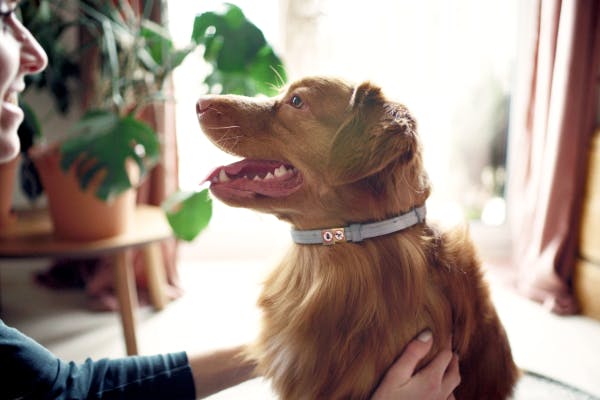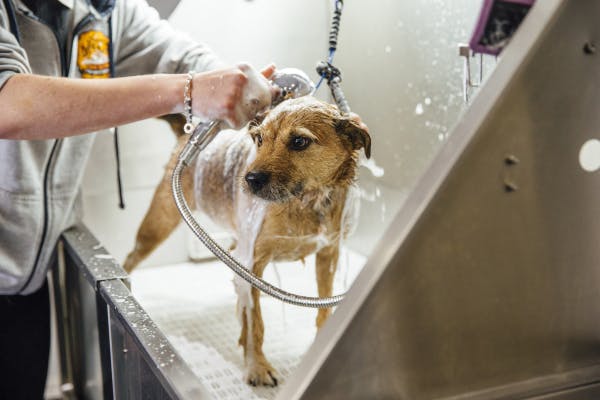learn about no pull dog harnesses
Advantages and Disadvantages of No Pull Dog Harnesses
No pull dog harnesses offer better control, more comfort, and serve as a training aid for dogs that tug on their leash. Yet, they can restrict movement, cause rubbing if not correctly fitted, and shouldn't take the place of proper behavior training.

No pull dog harnesses have become popular for pet owners with dogs that often tug on their leash during walks. These harnesses aim to discourage pulling behavior, making strolls more pleasant for the dog and its owner. Advantages of using a no pull dog harness include enhanced control and safety on walks, increased comfort for the dog, serving as an effective training aid, and lowering the chance of escape.
Benefits of No Pull Dog Harnesses
No pull dog harnesses are a popular choice for pet owners with dogs that often pull on their leash during walks. These harnesses are designed to discourage this behavior, making walks more enjoyable for both the dog and the owner. Here are some of the many benefits of using a no pull dog harness.
Control and Safety
One of the main advantages of using a no pull dog harness is that it gives you more control over your dog during walks. The design of these harnesses makes it harder for dogs to pull and get ahead, which can be particularly useful if your dog is large or strong. This can reduce the risk of injuries from sudden pulling and make walks safer.
Comfort for Your Dog
Unlike traditional collars, no pull dog harnesses do not put pressure on your dog's neck. Instead, they distribute the pressure more evenly across their chest and shoulders when they try to pull. This can be much more comfortable for your dog, especially if they have a habit of pulling hard.
Training Tool
A no pull dog harness can also act as an effective training tool. By discouraging pulling behavior, these harnesses can help teach your dog good leash manners over time.
Reduces Risk of Escape
No-pull harnesses often provide a snug fit which reduces the chance of your pet escaping from it compared to traditional collars or back-clip harnesses. This is especially beneficial in crowded areas where an escaped pet could lead to dangerous situations.
Better Walks
With a no-pull harness, walks become more enjoyable as you're not constantly battling with your pup over control. Instead, you can focus on enjoying the environment around you leading to a more pleasant experience overall.
In conclusion, no-pull dog harnesses offer numerous benefits including better control over your pet, increased comfort for them during walks, acting as an effective training tool by discouraging pulling behavior and reducing chances of escape. All these factors contribute to making walking experiences with your pet more enjoyable and stress-free.
Disadvantages of No Pull Dog Harnesses
However, despite their popularity, they do have some disadvantages that can affect your dog's comfort and health.
One of the main problems with a no pull harness is that it can limit your dog's body movement. These harnesses are designed to reduce pulling, but in doing so, they also restrict shoulder movement. This affects your dog's walking and balance, which are important for overall health, fitness, and core strength. The harness sits above important muscles and tendons such as the biceps and supraspinatus. Compression and limited motion in this area can lead to inflammation, pain, and even arthritis over time.
Another issue is that it can be difficult to find the right fit for your dog. Dogs come in all shapes and sizes, making it challenging to find a well-fitted no pull harness. Sizing problems are one of the main complaints from users. If the no-pull harness doesn't fit correctly, it can cause skin irritation from chafing or potentially result in chest injury if your dog pulls hard constantly.
For small dogs, a front-clip harness may not be the best option as it could get tangled around their front limbs causing them to stumble. Also, smaller dogs have delicate bone structures which means collars could cause damage to their windpipe.
Using a no-pull harness without proper training may also give an illusion of immediate behavior change without actually addressing the root cause of leash pulling behavior. Some dogs might go back to pulling once switched back to their original collar or harness because they haven't learned how to walk on a loose leash.
Lastly, leaving your dog unsupervised while wearing a no-pull harness could pose potential risks such as choking hazards if it gets caught on something or skin infections if left wet after walks.
While no pull dog harnesses can be helpful for some dogs, especially those with strong pulling tendencies, they do have several disadvantages that need careful consideration before deciding on using one.
best no pull dog harnesses
- our rating92 out of 100
- our rating91 out of 100
- our rating90 out of 100
Understanding No Pull Dog Harnesses and Finding the Right Fit
When walking your dog, choosing the right harness is very important. A well-fitted harness can greatly improve your dog's comfort and safety. This guide will help you find the right fit for your dog.
It's important to know that there are no standard sizes for dog harnesses. One company's medium-sized harness might be another company's extra-large. To choose the right harness for your dog, you need to take a few measurements:
Measure the Chest: Use a soft tape measure (or piece of string) to measure around the largest part of your dog's chest. Start at the bottom of their rib cage, bring the tape up and over their back, and then back down to where you began.
Weight: Your dog's weight can help you determine which harnesses will be strong enough for them to wear.
Neck: You'll need to know your dog's neck size for some types of harnesses. To get this number, wrap your tape measure around the thickest part of your dog's neck.
A dog harness should fit snug but not too tight; it should be tight enough that your dog can't back out of it, but loose enough that it doesn't cause discomfort or limit their natural movements.
If your dog resists walking or struggles when putting on their harness, it might be because the harness doesn't fit properly! A poorly fitting harness can cause discomfort and even medical problems if it restricts their natural movements.
To decide whether a collar or a harness is best for your pet, think about this: if your dog tends to pull or escape, or if you're training or lifting them often, they should probably wear a harness instead of a collar. A collar can put pressure on their trachea (throat), which could damage it and cause breathing problems.
Keep in mind that dogs come in many different shapes and sizes, so finding a one-size-fits-all solution might not be possible. If you're unsure about the best type of walking aid for your pet, always check with professionals.
Training Dogs with No Pull Harnesses
No pull harnesses are helpful tools for teaching dogs to walk nicely on a leash. They are kind options that do not put pressure on the dog's neck and spine, unlike traditional collars.
There are three main types of harnesses:
Back-Clipping Harness: This harness connects to the leash between the dog's shoulders. It is suitable for dogs that do not pull on the leash. However, it is not recommended for dogs that pull or have problems with leash reactivity.
Chest-Led Harness: This harness can help stop pulling and give you more control over a dog that reacts to the leash. It clips at the chest and is designed to be effective, gentle, and pain-free.
Head Collars: These are another choice for dogs that pull a lot on their leashes or have serious issues with leash reactivity.
When using these types of harnesses, it is important to get your dog used to them slowly because many dogs are unsure of them at first. The collar should be quite snug, with space for one finger between the collar and the dog's neck.
It is also important to remember that no-pull harnesses should be used as a training aid rather than a permanent solution. With regular use and positive reinforcement, your dog will learn to walk calmly by your side without needing the harness.
In addition to using these tools, giving mental and physical stimulation can also help reduce pulling behavior during walks. Energetic games in the house or yard can help use up some energy before walks, making your dog less likely to pull from excitement or restlessness.
Lastly, while no-pull harnesses can be very useful in teaching your dog not to pull on their leash, they should not replace proper behavior training. If your dog shows severe leash aggression or other behavior problems, talking with a positive trainer in your area may be helpful.







